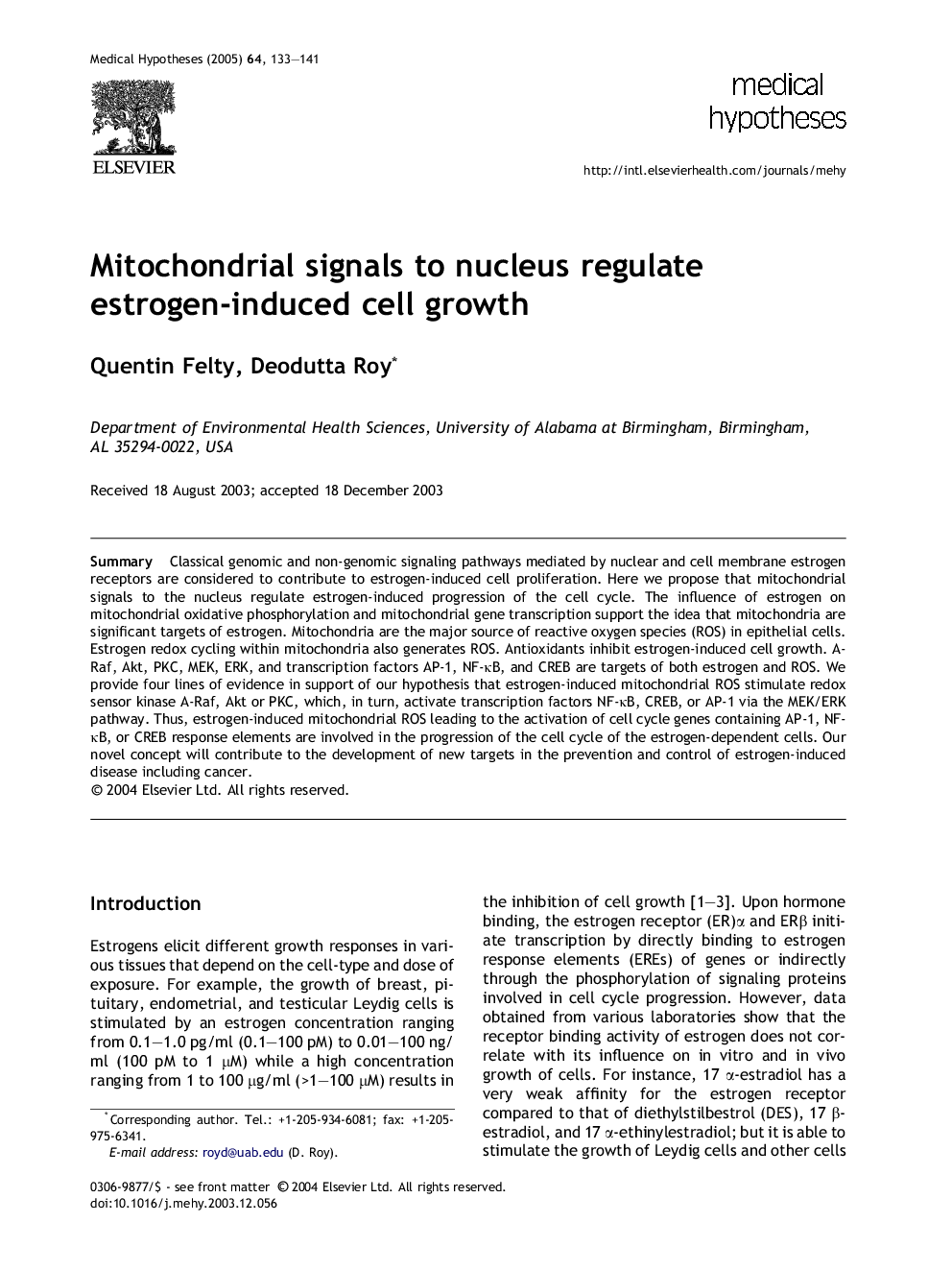| Article ID | Journal | Published Year | Pages | File Type |
|---|---|---|---|---|
| 8996916 | Medical Hypotheses | 2005 | 9 Pages |
Abstract
Classical genomic and non-genomic signaling pathways mediated by nuclear and cell membrane estrogen receptors are considered to contribute to estrogen-induced cell proliferation. Here we propose that mitochondrial signals to the nucleus regulate estrogen-induced progression of the cell cycle. The influence of estrogen on mitochondrial oxidative phosphorylation and mitochondrial gene transcription support the idea that mitochondria are significant targets of estrogen. Mitochondria are the major source of reactive oxygen species (ROS) in epithelial cells. Estrogen redox cycling within mitochondria also generates ROS. Antioxidants inhibit estrogen-induced cell growth. A-Raf, Akt, PKC, MEK, ERK, and transcription factors AP-1, NF-κB, and CREB are targets of both estrogen and ROS. We provide four lines of evidence in support of our hypothesis that estrogen-induced mitochondrial ROS stimulate redox sensor kinase A-Raf, Akt or PKC, which, in turn, activate transcription factors NF-κB, CREB, or AP-1 via the MEK/ERK pathway. Thus, estrogen-induced mitochondrial ROS leading to the activation of cell cycle genes containing AP-1, NF-κB, or CREB response elements are involved in the progression of the cell cycle of the estrogen-dependent cells. Our novel concept will contribute to the development of new targets in the prevention and control of estrogen-induced disease including cancer.
Related Topics
Life Sciences
Biochemistry, Genetics and Molecular Biology
Developmental Biology
Authors
Quentin Felty, Deodutta Roy,
